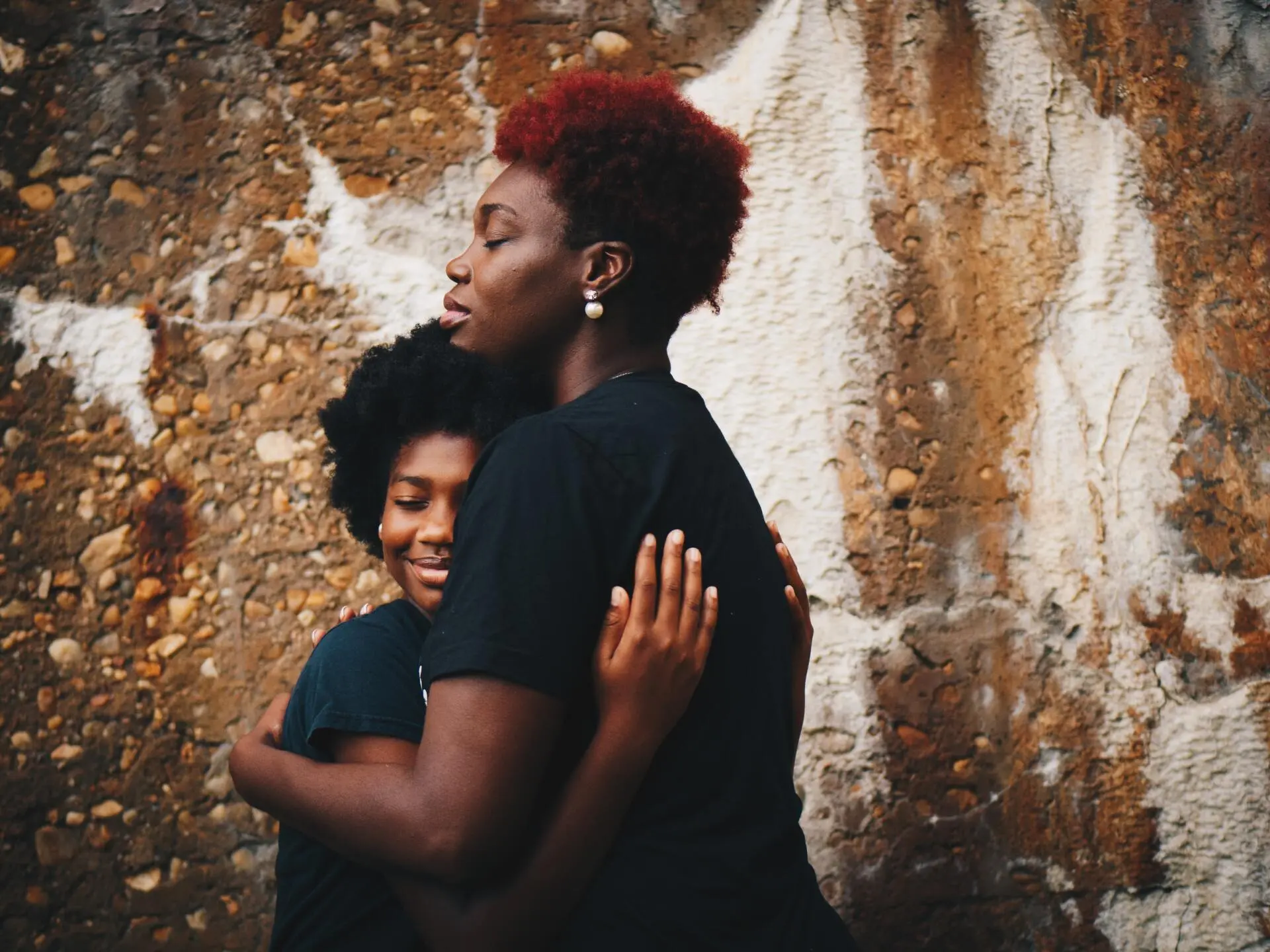Age-Appropriate Consequences for Lying in Preteens

Consequences for Lying in Preteens
Building Emotional Safety, Restoring Trust, and Teaching Accountability through Connection
You catch your preteen in a lie. Maybe it’s something small, like saying they finished their homework when they haven’t. Or maybe it’s bigger: sneaking screen time, covering up a mistake, denying something you know happened. Your heart drops. You feel the sting of betrayal. Maybe you’re angry. Maybe you’re scared. Maybe you’re wondering, “How did we get here?”
If you’ve been there, you’re not alone.
Lying in the preteen years can feel deeply personal, but more often than not, it isn’t about defiance or disrespect. It’s about protection. At this stage of development, children are beginning to navigate more complex emotions, social dynamics, and a growing need for independence. Sometimes, lying is their best attempt to avoid shame, sidestep conflict, or preserve connection, especially when they aren’t sure it’s safe to tell the truth.
At the Jai Institute for Parenting, we view lying not as a moral failure, but as a signal that invites us to look beneath the surface. We teach that behavior is communication, and every misstep is an opportunity to build trust, reinforce values, and model emotional maturity. Rather than punishing dishonesty, we focus on strengthening the relationship behind it.
The truth is we’ve all lied, and when we tap into our own relationship to the truth, we can discover powerful tools to respond to lying with empathy and set consequences that teach rather than shame. It is possible to turn these challenging moments into meaningful growth for both you and your child.
Why Preteens Lie and How to Understand It
Developmentally Normal Behavior
Lying is developmentally expected. Around ages 9 to 12, children begin developing a more nuanced understanding of social dynamics, consequences, and abstract reasoning. According to Dr. Victoria Talwar, a leading researcher on child deception, lying at this stage is often a sign of cognitive sophistication, as children learn to navigate rules, consequences, and emotional complexity.
But that doesn’t mean it’s a behavior we ignore. It means we respond to it with intention.
What’s Beneath the Lie: A Needs-Based Lens
At the Jai Institute for Parenting, we hold a foundational belief: all behavior is communication. When a teen lies, it’s not because they’re manipulative, broken, or destined for trouble. It’s because they are trying, imperfectly but sincerely, to meet a core emotional need. In fact, most lies aren’t calculated betrayals; they’re stress responses. Fast decisions are made in the moment when a teen feels trapped between truth and perceived threat.
Let’s look beneath the surface of the behavior to the needs that often drive it.
- Safety
This is the most common driver. A teen might lie because they fear punishment, criticism, or disconnection. Their nervous system, wired for survival, sends the message:
“If I tell the truth, something bad might happen.”
So they say what they think you want to hear. Not because they don’t care about the truth, but because they are scared. The lie is their way of protecting themselves from what feels like danger: your disappointment, a harsh consequence, or the loss of your approval.
- Connection
Teens lie when they’re afraid of losing emotional closeness. For example, a teen might say, “I wasn’t with them” if they believe the truth will rupture your bond.
Their deepest fear isn’t punishment, it’s disconnection. Especially if they see you as someone who has high standards or values honesty deeply. The lie becomes a misguided attempt to stay in your good graces, to protect the relationship.
- Autonomy
Adolescence is a time of individuation. Teens are wired to begin stepping into their own agency. When they feel overly controlled or that their voice isn’t being heard, they may lie as a way of asserting independence.
It’s not rebellion so much as an attempt to reclaim their sense of self. Saying,
“Yeah, I already did my homework,” may feel like a small act of power in a world where many of their decisions are still managed by adults.
- Belonging
The teenage years are also marked by a deep desire to fit in. A teen might lie about where they were or who they were with because they’re trying to maintain status or acceptance among peers.
If telling the truth means being excluded, judged, or seen as “different,” a lie can feel like the only way to stay in the group. This need is primal because belonging has everything to do with survival in
the teenage brain.
- Power
Finally, some lies stem from an internal sense of powerlessness. When teens feel they have no control over their environment, lying can become a strategy to regain some ground.
If they’re overwhelmed, angry, or stuck in a pattern of conflict with adults, dishonesty might be a way to reclaim a sense of control, however small. These are not malicious lies; they are bids for agency from teens who feel unheard or unseen.
When we understand lying through this lens, everything changes. We stop asking
“How do I stop this behavior?” and start asking
“What is my teen trying to protect or express?”
That shift is powerful.
It turns conflict into curiosity. It turns a lie into a doorway back to connection. And it teaches our teens that they don’t need to be perfect to be loved. They need to be real, and they need to be safe.
Example:
Your 10-year-old says, “I didn’t eat the last cookie,” even though the crumbs are clearly visible. The behavior isn’t about cookies. It's about avoiding the emotional consequences they anticipate (disappointment, scolding, or shame).
What’s Really Happening: The Inner Experience of a Lying Preteen
When a child lies, they’re often:
- Afraid of losing connection
- Afraid of being misunderstood
- Lacking
tools for emotional regulation
- Testing the emotional safety of their environment
If lying leads to yelling or punishment, the child learns:
“Telling the truth is risky.”
But if lying leads to curiosity, reflection, and repair, the child learns:
“I can make mistakes and still be loved.”
How to Set Appropriate Consequences
The Difference Between Consequences and Punishment
The Difference Between Consequences and Punishment is that punishment is designed to induce discomfort or suffering to deter future behavior, while consequences, in a values-based parenting model, are natural or logical outcomes that support learning, accountability, and growth.
Punishment often creates fear. Consequences, when handled empathetically, build emotional intelligence.
Research insight:
A 2014 study published in
Child Development found that punitive discipline (such as yelling or harsh consequences) was linked to higher levels of lying, especially in children who feared relational rupture.
What Makes a Consequence Appropriate?
A helpful consequence:
- Is connected to the behavior
- Reflects the family’s values
- Encourages accountability, not shame
- Involves the child’s voice in problem-solving
Example:
If your child lies about breaking something, rather than saying,
“You’re grounded for a week!”
try:
“In our family, we value honesty and taking responsibility when something goes wrong. Let’s come up with a plan together to fix or replace what was broken, and to make things right.”
This builds trust and teaches the real-life impact of choices.
Restorative Practices for Preteens
Why Restoration Matters More Than Retribution
At the Jai Institute for Parenting, we understand that moments of lying, while painful, are also invitations. Invitations to slow down, reconnect, and guide our teens toward emotional responsibility and inner integrity.
That’s where our PEACE Process comes in. It’s not a script, but a framework. A way to meet conflict with curiosity and repair rather than reaction.
It begins with Presence.
Before we speak, we pause. We check in with ourselves. Are we grounded enough to respond rather than react? When we regulate our own nervous systems first, we create the emotional safety our teen needs to stay open. It’s not about getting it perfect. It's about showing up calm enough to hold space for something hard.
Next comes Empathy.
This is where we attune to what might be going on beneath the lie. What were they feeling? What need were they trying to meet? We don’t have to excuse the behavior to understand it. Even a simple reflection: “I wonder if you felt afraid to tell me the truth”, can shift the entire energy of the conversation. When teens feel seen, not shamed, they’re more willing to open up.
From there, we move into Awareness.
This is the heart of emotional growth. We invite our teens to reflect, not with interrogation, but with gentle curiosity:
“What was going on for you in that moment?” or “What felt hard about being honest?”
We’re not looking for excuses. We're helping them build the insight needed to make different choices next time.
Once awareness is present, we invite Choice.
What might honesty look like moving forward? How can they handle a similar situation differently? This step is about collaboration, not control. When teens are included in creating solutions, they begin to internalize values instead of resisting rules.
Finally, we arrive at Empowerment.
This is where we repair. We ask:
“How can we rebuild trust from here?” or “What would help both of us feel good moving forward?”
It’s a chance for your teen to experience accountability that feels strengthening, not shaming. A moment that says, “You’re still worthy. You’re still loved. And you’re capable of repair.”
The PEACE Process isn’t just about navigating dishonesty. It's about building a relationship that can hold the truth, even when it’s messy. Because ultimately, that’s what raises emotionally resilient, self-aware young adults: not punishment, but presence. Not perfection, but connection.
Narrative Example: The Forgotten Assignment
Your 12-year-old tells you their project is finished, but you find out later it was never started. They lied to avoid your disappointment.
Traditional Response:
“You lied to me. You’ve lost your video games for the week. You can’t be trusted.”
Restorative Response:
“Hey, I noticed you said the project was done, but it looks like it’s not. I wonder if it felt scary to tell me that. I care more about how we handle this together than whether it’s perfect. Let’s talk about what support you need and how we can make a new plan.”
Now you’ve opened the door to problem-solving and reflection instead of fear and avoidance.
Questions to Support Restoration
- What do you wish you had done differently?
- What felt hard about telling the truth?
- What can we learn from this?
- How can we make things right?
These questions activate the prefrontal cortex and build emotional maturity.
Encouraging Honesty Through Empathy
The Neuroscience of Empathy
Empathy isn’t permissiveness. It's emotional attunement that strengthens the brain’s capacity for self-regulation and decision-making.
When we validate a child’s feelings and name their needs, we co-regulate their nervous system. This creates a sense of internal safety, allowing them to access their reasoning brain (prefrontal cortex) rather than reacting from fear or fight-or-flight.
From the curriculum:
“We cannot ‘will’ ourselves into emotional maturity. We must feel ourselves into it.”
This is especially true for preteens, whose brains are undergoing massive rewiring. Every time we pause, connect, and reflect with them, we are laying down neural pathways for honesty, empathy, and self-trust.
Narrative Example: The Party Lie
Your preteen says they didn’t go to a party, but you find out from another parent that they were there.
Traditional response:
“You lied. You're grounded. That’s the end of the conversation.”
Empathy-based response:
“I heard from Ella’s mom that you were at the party. I imagine it felt really hard to tell me you were going. Maybe you thought I’d be upset. I want you to know that I care about honesty, not perfection. I’m here to listen, not judge.”
Then pause. Listen. Be a safe landing place. Once they feel safe, you can co-create a plan:
“What would honesty look like next time, even if it’s uncomfortable?”
From Power Over to Partnership: The Long-Term Vision
Traditional parenting often uses
power-over strategies (punishments, threats, or emotional withdrawal) to gain compliance. But compliance isn’t the goal.
Integrity is. And integrity can only grow in the soil of trust, respect, and empathy.
One of the most profound shifts we can make as parents is moving from power over our children to partnership with them. Traditional parenting often relies on control to gain obedience. And while these tactics may produce short-term compliance, they don’t build what most of us truly want for our children: integrity. Real integrity can’t be forced. It grows slowly, over time, in the presence of trust, mutual respect, and empathy.
When we shift to a power-with approach, we create the kind of relationship where our preteens feel seen, heard, and valued. They begin to internalize the message that their voice matters, that they’re allowed to make mistakes and learn from them, and that telling the truth, even when it’s hard, won’t cost them love or connection. In this environment, honesty becomes a natural outcome of safety, not a performance to avoid punishment.
Over time, children raised this way learn to honor themselves and others. They begin to make values-based choices, not just when someone is watching, but because it feels right inside their own body.
This is the long game. Not just raising kids who follow rules, but raising humans who live with integrity.
By shifting to power-with practices, you teach your preteen:
- That their voice matters
- That mistakes are opportunities for growth
- That the relationship can hold hard truths
This shift supports the long-term goal: to raise a human who knows and honors themselves, who acts with integrity even when no one is watching.
Practical Tools for Parents
There are simple, powerful ways parents can begin to foster a deeper culture of honesty at home, starting not with rules, but with the relationship. One of the most effective tools is creating a shared language around family values. When we speak openly about what matters most to us, like honesty and connection, we give our children a framework to grow into.
Phrases like “In our family, we tell the truth, even when it’s hard,” or “We can do hard things together, especially when it comes to being honest,” create a sense of belonging and clarity. It’s also helpful to model vulnerability by saying, “We’re all learning, and that includes me.” These words let your child know that honesty isn’t a performance, it’s a shared practice.
When dishonesty happens, as it inevitably will, consider offering a chance for a do-over once emotions have settled. Instead of shaming or scolding, gently invite them into an “empathic redo.” You might say, “Let’s try again. How would you like to say that if you felt safe telling the truth?” This approach doesn’t just correct the behavior. It builds the skill of honest communication by modeling it in real time.
And perhaps most importantly, keep perspective. One lie doesn’t define your child, and it doesn’t define your relationship. What matters most is how we respond. Each moment of empathy, curiosity, and repair builds a bridge toward long-term emotional safety and trust. That bridge becomes the foundation of the kind of relationship that not only survives the preteen years but grows stronger because of them.
Create a Family Culture of Honesty
Start with shared values. Use language like:
- “In our family, we tell the truth, even when it’s hard.”
- “We can do hard things together, especially when it comes to being honest.”
- “We’re all learning, and that includes me.”
Practice Empathic Redos
When a lie occurs, and emotions are calm, invite a redo:
“Let’s try again. How would you like to say that if you felt safe telling the truth?”
This teaches skills through modeling, not lecturing.
Keep Perspective
One lie does not define your child—or your relationship. When we meet dishonesty with connection, we build a bridge to long-term emotional safety and trust.
What Consequences Really Mean
If we’re being honest with ourselves, most of us grew up equating “consequences” with punishment. We were taught that misbehavior demanded a strong response, something done to a child that made them uncomfortable enough to “teach a lesson.” The implication was clear: if the consequence didn’t hurt in some way, it wouldn’t work.
But here’s the truth we now understand as conscious parents: the real learning doesn’t come from the punishment. It’s already happening in your child’s nervous system, in their emerging self-concept, and in the sacred space between you.
When your preteen lies, they already know something went wrong. Their body may be buzzing with shame, fear, or regret. They may be bracing for rejection. The moment is tender, and what they need isn’t retribution, it’s reconnection.
What if the consequence, instead of being a loss of privilege or time, was an invitation? What if it sounded like:
“You can tell me the truth, and I will still love you. I will stay connected. I will help you find your way back.”
This doesn’t mean there are no boundaries or expectations. It means we hold those boundaries with empathy, not anger. It means we put our arm around their shoulder and say, “Let’s walk through this together.”
Real-Life Example:
Nora, a Jai-certified parenting coach and mother of three, shared this story: One afternoon, her 11-year-old daughter, Mia, told her she had finished her math homework. Later that evening, Nora noticed the assignment was untouched in her backpack.
Her first instinct was to scold: “Why did you lie to me?” But she paused, took a breath, and chose a different path. She sat beside Mia and gently said, “Hey, love, I saw the math sheet is still in your bag. I wonder if it felt hard to tell me the truth earlier?”
Mia’s eyes welled up. “I didn’t want you to be mad,” she whispered. Nora pulled her in close and replied, “Thank you for telling me now. I know it’s not always easy. Let’s take a look at it together.”
No yelling. No grounding. Just presence, honesty, and a quiet reminder that the relationship was still intact.
That’s not letting kids off the hook. That’s teaching them that their worth isn’t tied to their performance and that making a mistake doesn’t make them unlovable. When we parent this way, we raise children who can face the truth with courage, own their actions without spiraling into shame, and repair relationships with dignity.
These are not just parenting strategies. They are life skills that will serve our children far beyond childhood.
This is what true consequence looks like: not isolation, but integration. Not fear, but responsibility. Not power-over, but compassion-in-action. And it begins not with control, but with connection.
Want more support?
Download our free guide,
The PEACE Process for Restoring Trust After a Lie, or explore
Jai's 7-Months Parent Coaching Program and become a certified parent coach!
Meet Your Author, Kiva Schuler
Jai Founder and CEO
Kiva’s passion for parenting stemmed from her own childhood experiences of neglect and trauma. Like many of her generation, she had a front row seat to witnessing what she did not want for her own children. And in many ways, Jai is the fulfillment of a promise that she made to herself when she was 16 years old… that when she had children of her own, she would learn to parent them with compassion, consistency and communication.
Kiva is a serial entrepreneur, and has been the marketer behind many transformational brands. Passionate about bringing authenticity and integrity to marketing and sales, she’s a sought after mentor, speaker and coach.
Share This Article:
Curious for more?














